What does it really take to create a great portrait?
Do you need multiple lights, a dozen reflectors, several backgrounds, six soft boxes, three umbrellas, a makeup artist, a costume designer, and a wind machine?
No. Well… maybe if you’re shooting Angelina Jolie for Elle Magazine.
But the truth is- YOU- can create compelling portraiture with very little equipment.
All of those other “tools” can expand the possibilities. However, we all have to start somewhere.
I shot my very first portrait (for hire) back in 1981. It was my sister’s insurance agent, and he wanted a headshot for his business card. I was so nervous. I really just wanted to get it in focus and reasonably lit.
I understand what it feels like to be starting out.
It’s a little easier now, I think. Just about all of us have some means of editing our work (before anyone else gets to see it). That wasn’t an option back then.
Over my professional career, I have shot more portraits than I can count. I’ve shot CEOs and Farmhands. I’ve created portraits in such diverse locations as a wheat field and a broom closet.
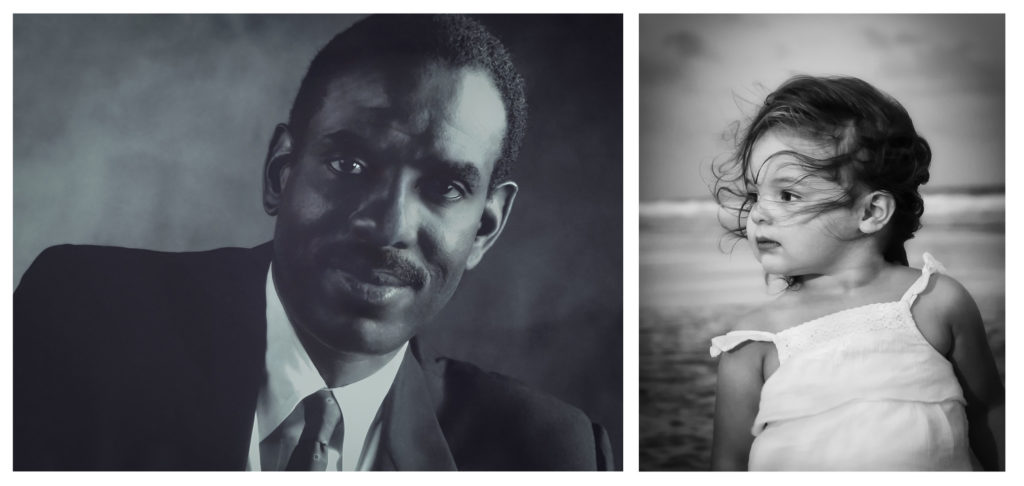
Photograph by Kent DuFault
The portrait on the left is the very first CEO portrait that I was ever hired to create. I used a window, a white card, and one electronic flash unit.
The image on the right is a more recent example of a portrait that I was hired to create. I used outdoor available light and one electronic flash unit.
In both cases, the clients were extremely happy with the end results.
There are several points that I’d like you to ponder after looking at these two images-
- Successful portraiture does not require a great deal of equipment. It does require a fair amount of thought and planning.
- If you’re being paid to create a portrait, it’s only successful if your client loves it.
- Light is important- how you use that light is even more important.
- When you have limited equipment capability- your choice of background becomes even more crucial.
- Consider your client’s needs. A portrait of the CEO, outdoors, on the beach, would not create the appropriate image. A portrait of the little girl, indoors, with her hair perfectly in place, does not create as compelling and memorable an image for her parents.
- When working with minimal lighting, judging contrast is a key skill. Rarely will your portrait be successful- if your subject blends into the background.
- You must develop the skill to use whatever light you have for multiple purposes. (Learn to bounce it, reflect it, feather it, block part of it, etc.)
(Note: If you want a comprehensive guide on “The Art of Portrait Photography”, take a look at my book here: https://photzy.com/theartofportraitphotography/)
Let’s Talk Background…
Many beginning photographers tend to ignore the background as they venture into portraiture. Don’t fall into that trap. Even with a headshot, the background is visible all around your subject. If there is an object, or a contrasting shape or color, in the background- it will immediately draw attention away from your subject. And trust me, your client is not going to like that.
When working with limited equipment keep the background simple.
Ask yourself these questions when determining where you should create the portrait-
- Should the background be light or dark?
- Are there any natural reflectors around?
- Can you add light by using existing resources such as a window, doorway, open shade, sunshine, walls, or incandescent lights?
In my example photos above-
The dark side of the CEO is against a light background. The light side of the CEO is against a dark background.
The “very white” little tank top on the child is against a dark background. The dark brunette hair is against a light background.
Those two observations relate to my earlier comment that you must develop your skill in evaluating contrast. Plus, question #1- Should the background be light or dark? If your subject is wearing a black suit- a dark background probably isn’t going to work… Especially when you’re working with minimal equipment.
What about having no background?
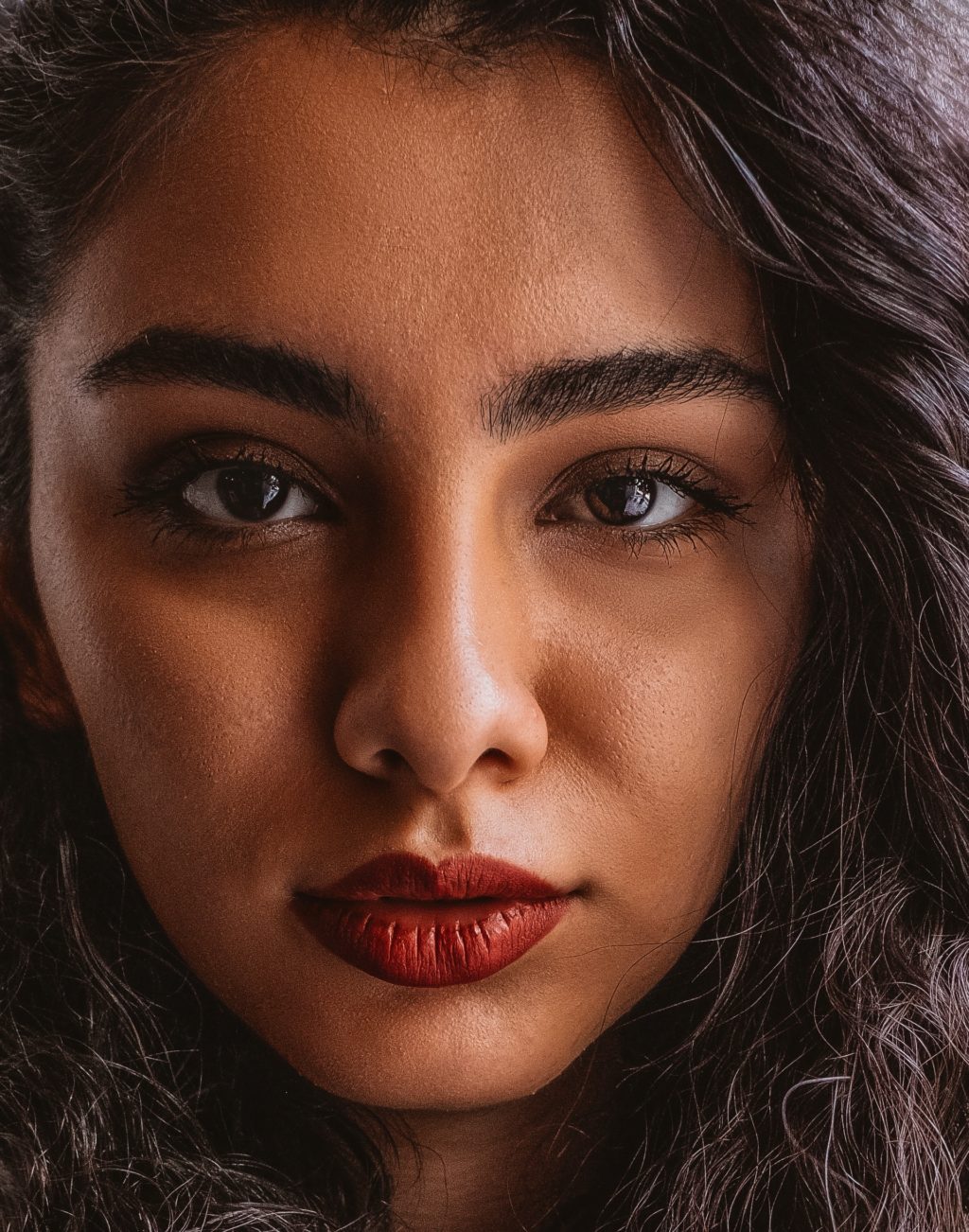
Photograph by Omid Armin
My personal opinion is to include some background, if possible. A background adds depth to a portrait. That being said- no background is better than a busy background. Take notice in Dustin’s photograph, he has for the most part, created separation between the model and the background using a single light source and a reflector. The only spot that’s a little bothersome is in the upper left area of the head, where the model’s hairline disappears into the background.
Here’s a tip for you that is inexpensive and easy to add to your kit. Go to a fabric store and purchase black velvet. It usually comes in the width of a yard (3 ft. or 92 cm) or three yards (9 ft. or 274 cm). It’s cheaper to buy several strips of the smaller size and sew them together yourself. Black velvet is the perfect background for dropping out all light. It goes totally black. It’s very useful for any portrait session- but especially if you’re working with only one light. Ideally, you want to end up with a black velvet cloth that measures 12 ft. x 12 ft. (3.75 meters squared).
How many sources of light do you really have?
The answer to this is really… Probably more than you realize… If you think about it, unless you’re sitting in a sealed pitch-black room- there is always some available light somewhere- and probably multiple sources.
If you own a portable electronic flash- that’s one source right there. If there is available light- that’s two sources. If you can figure out a situation where you can bounce some light- that’s three sources.
Do you see where I’m getting at?
You have to use your mind, and imagination, to find your lighting, and then multi-purpose it for your portrait.
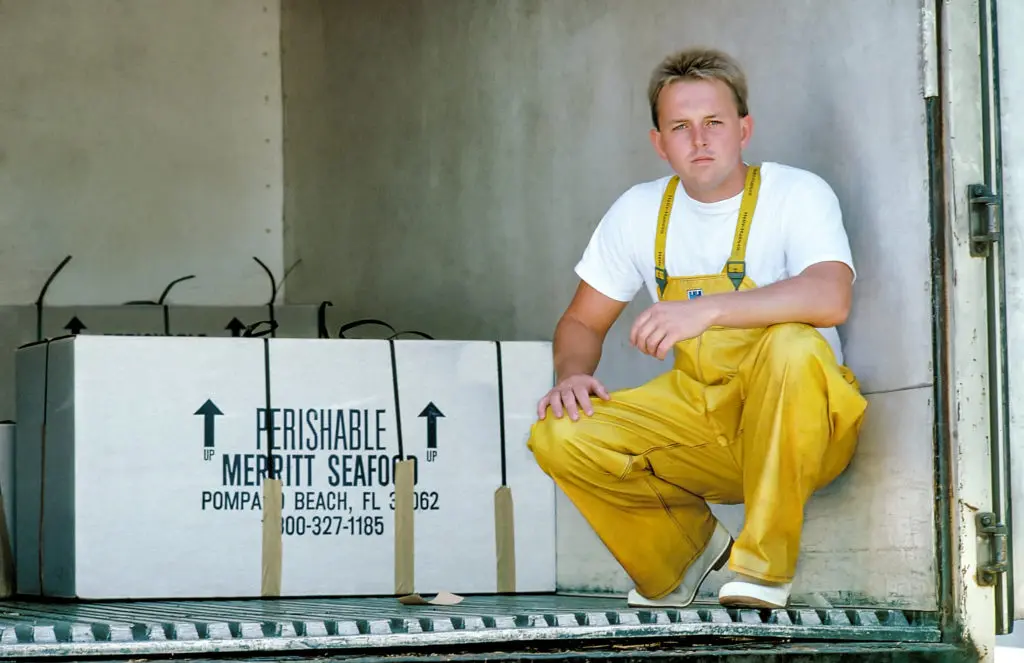
Photograph by Kent DuFault
The image of the dockworker is a perfect example of finding and multi-purposing the available light sources for a portrait.
This portrait was taken as part of a much larger corporate assignment. It had to please multiple people, and it required space being left open for copy (written words) to be dropped in over the photograph.
The area where the photograph had to be created was primarily outdoors. It was a busy place, and the background was very busy. I had a full equipment package with me, including an extensive lighting kit. However, I was told that I would only be allowed in the area for a limited time due to insurance issues, and they didn’t want their employee sitting around for too long.
It had to be a compelling portrait, and it also had to tell the story of what this employee did for the company.
I did a quick walk around the location and realized there was not much there for a background. Also, it was midday in Florida. The sunlight was blinding, and the temperature was hot. It was not a pleasant atmosphere to create a mood for a portrait.
Then, I saw the opened doors of the cargo compartment for this truck.
Using the truck solved a number of problems-
- It simplified my background.
- It gave me the areas that I needed for the copy.
- It took the employee out of the bright midday sunshine and put him into an open shaded light source. In effect, the open end of the truck became a big softbox.
- The light interior walls of the truck were multi-purposed as reflectors, because they bounced all of the light around filling in the shadows.
- I used one portable flash, off-camera, which was set to bounce off of the roof of the truck, and aimed directionally toward the rear of the truck, so that the rear area of the cargo compartment didn’t end up looking like a black hole.
- Upon making the decision to use the truck. I was able to setup, and create, the portrait in less than 5 minutes, and the client was ecstatic with the result!
That entire story was told to get you thinking creatively about how to create with minimal equipment- even if you’re limited to one portable flash!
Think About Positioning When You Only Have Minimal Equipment.
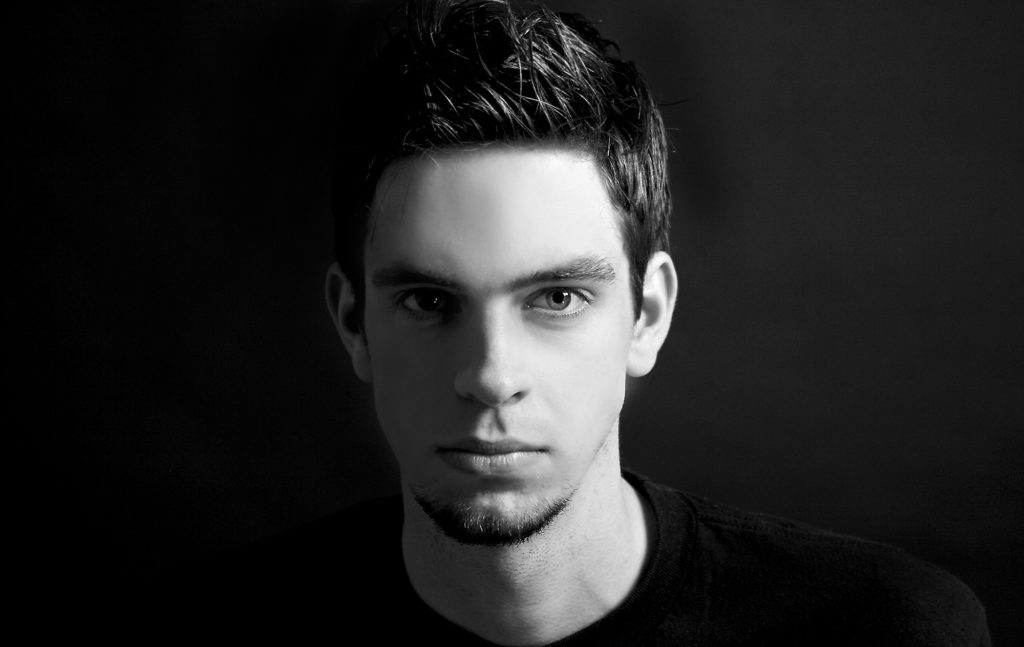
Photograph by vanessa_hutd
When you’re working with minimal equipment. Rarely will you achieve a compelling portrait if the light source is coming directly from the camera. In other words, either get the light source away from the camera, or re-direct the light source, or multi-purpose it.
In this photograph, by Vanessa, she utilized off-camera flash. What else could she have done to achieve a similar effect? If she had a flash with a head that swivels, she could have position her subject close to a wall, swiveled the flash head toward the wall, and bounced the light.
Tada! Pleasant portrait side-lighting with minimal equipment.
What if she had a flash that doesn’t swivel or tilt? She could cut herself a piece of heavy black art board (available at any art supply store) that measures approximately 20 inches square (50 cm). She could then use spray mount to cover one side of that board with highly reflective tinfoil. She could then position her subject near the wall, and use her board to re-direct the electronic flash toward the wall.
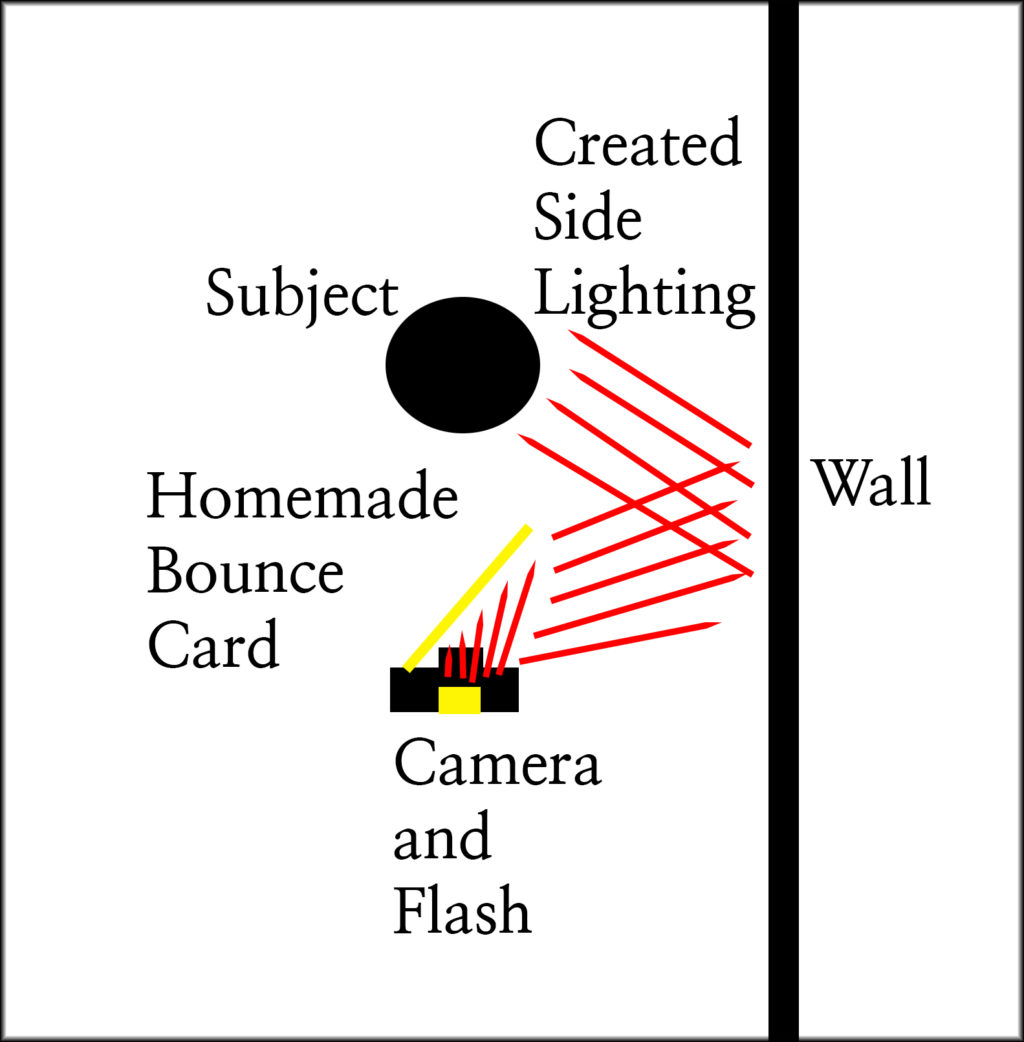
Illustration by Kent DuFault
This is Key to Success with Minimal Equipment.
You should realize that no matter where you are, or how few pieces of equipment you have; you can create a technically awesome portrait when you utilize some forethought and preparation.
Let’s touch briefly on why many portraits fail.
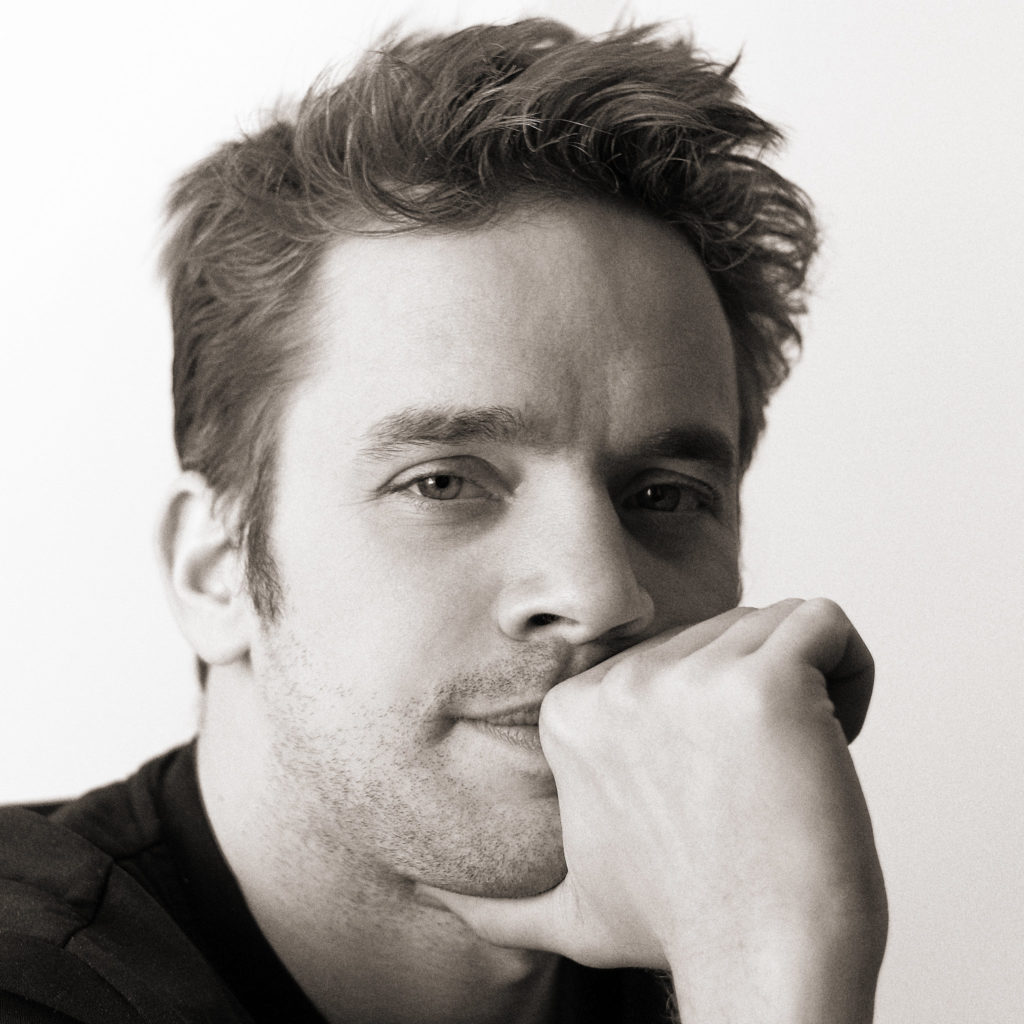
Photograph by Yuri Samoilov
What is Portrait Photography?
Portrait photography (or portraiture) is the creation of images that tell the story about a person or a group of people. It does this through the display of expression, personality, location, clothing, props, and mood of the subject(s).Whenever you create a portrait, you should strive to accomplish these three goals.
- Present an emotion
- Tell a story
- Meet the needs of the client
The above paragraph is an excerpt from my book on portrait photography. I feel very strongly about the statements in that paragraph.
Many photographers, when they begin producing portraits, get tied up in lighting diagrams and camera settings. It’s all about the equipment. Their results, while often technically proficient, don’t create emotion. They don’t compel a viewer. The portrait becomes a standard issue, could have been done anywhere, going into the church directory, styled image.
I urge you to resist that temptation.
The portrait of the man, created by Yuri, is a perfect example of a photograph that meets all the criteria in my paragraph (above). Yet, it was created with almost no equipment: one light source, (a window), a simple background (an imperative when working with minimal equipment), a compelling pose (that presents an emotion and tells a little story), and there’s little doubt that the subject loved this portrait of himself!
I hope that this article has opened your mind to the possibilities of creating compelling portraits with the gear that you currently own right now.
It doesn’t take a ton of equipment.
If you would like to learn more about, “The Art of Portrait Photography”, check out my book here: https://photzy.com/theartofportraitphotography/
I want to warn you- this book is not filled with lighting ratios and setup diagrams. It’s more in line with my excerpt posted above. The book will fill your mind with ideas, and provide you with solid information on how to create compelling portraiture- that others will want to hire you to create!





30 Comments
Great stuff – thanks Kent !
Thank you, ElinL!
Another great mini tutorial again Kent!
Thanks Erik!
Love it, KISS paradigm
Thanks!
Explained with compelling examples. Thanks
Thank you Javed!
Thanks Kent. Like the way you break down the on sight thought process into simple effective steps. The sign of a great teacher.
Thank you so much, Jay!
Sometimes I search for background and light. Then I wait for my subject.
Interesting… Street Portraits?
You so right Kent . I like the way you tell the truth. The equipment does not make a good Photographer. Understanding of light and creativity in jury rigging a setup. I have come through everything you said, not watching the background, being to hasty just to get the shot in to the box and not using what is there.
Thanks for your thoughts, Dieter.
Great article!
Thank you Clifford!
The article and photographs are excellent . The tips are invaluable . Please mention next time that what camera is used, ISO , shutter speed, aperture etc. This information will be more helpful.
The Ceo Portrait was originally shot on Plus-X film with a Nikon F3 camera and a 105mm lens. I don’t remember the settings. The Child was photographed with a Canon 7D and a Canon 70-200mm L Series F/2.8 Lens.
Thanks for posting that, Ken! We beginners also “deserve” to come out with good pics, ain’t it so? LOL Great tip!
Thanks for your comment Alex. And yes, beginners do deserve the chance to create awesome images!
Thank you Kent for clear and concise advice.
Thank you for your comment, Diane.
Great article with excellent tips.
It is always worth remembering that sometimes breaking the rules works too.
Personally, I like to shoot portraits in available light when I can, especially on location. Sometimes amazing results can be achieved in the unlikeliest of places. – I shot this one on a very grubby staircase leading down to a basement of an office building using available light, with a EF100mm f/2.8L lens on a Canon 5d Mk ii https://c1.staticflickr.com/1/357/19657632614_9569703bbd_b.jpg
It may not be the best portrait ever taken, but the subject (a MUA doing her first ever shoot as a model) was very pleased with it!
Thanks for the comment Antony!
Excellent advice. Thank you for sharing—
Thank you Joanne!
Great work, Kent! Well thought and clearly presented advice. Especially like the way you thought outside the box when you shot inside the box(the truck) getting an emotional connection with your subject is the absolute key to getting a portrait with impact. Thanks for sharing
Thank you, Julian!
A million thanks for sharing, Kent 🙂
very usefull Kent..